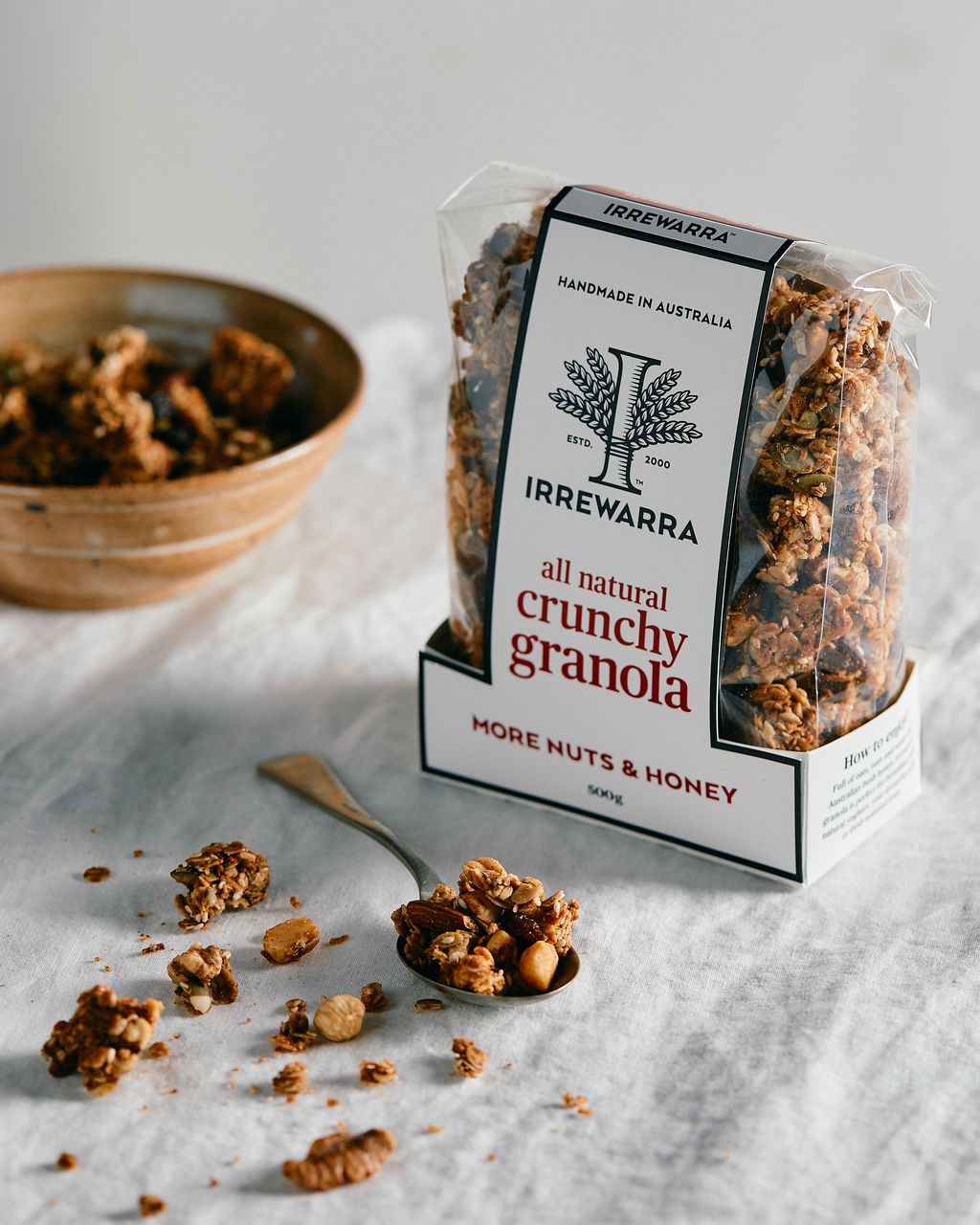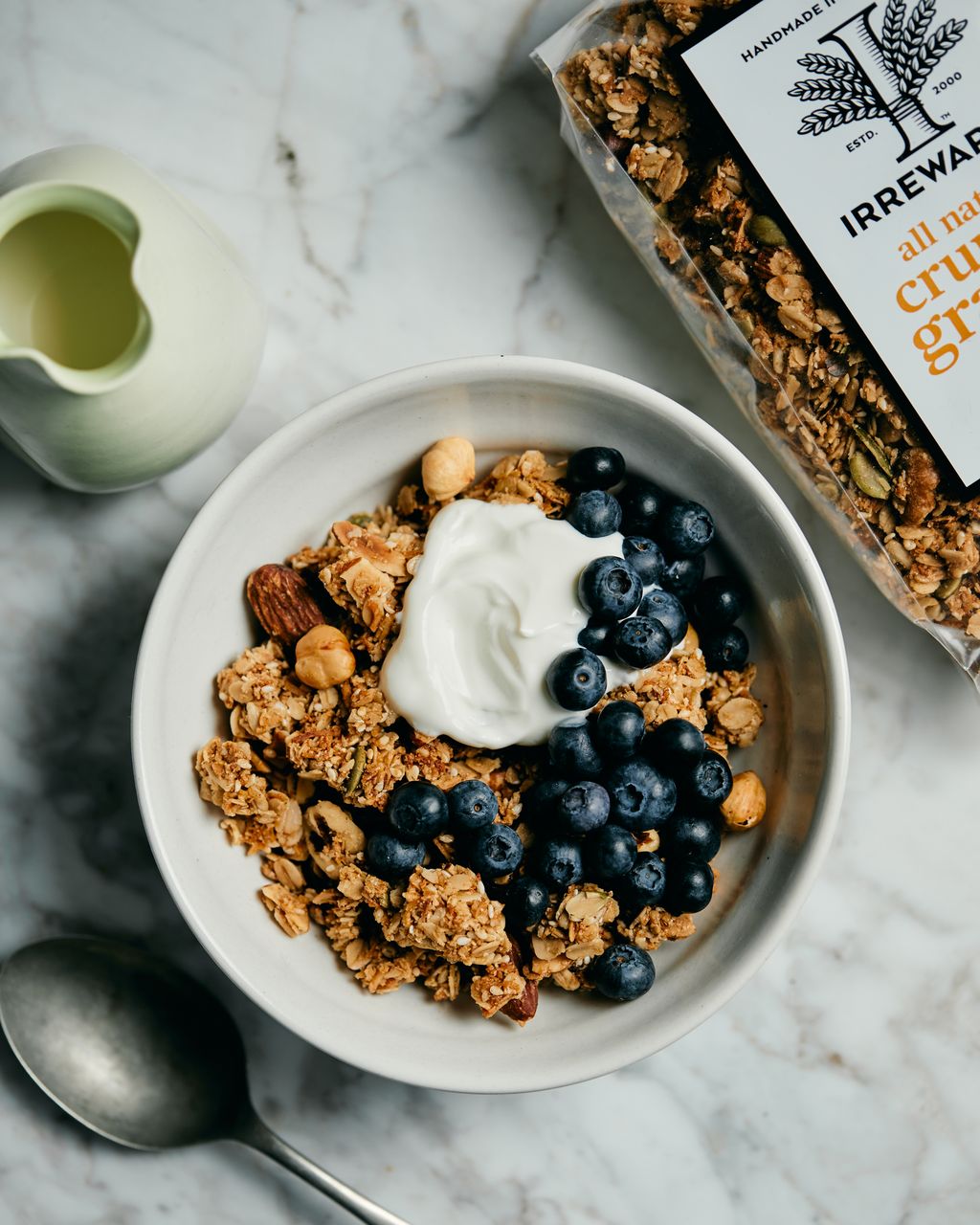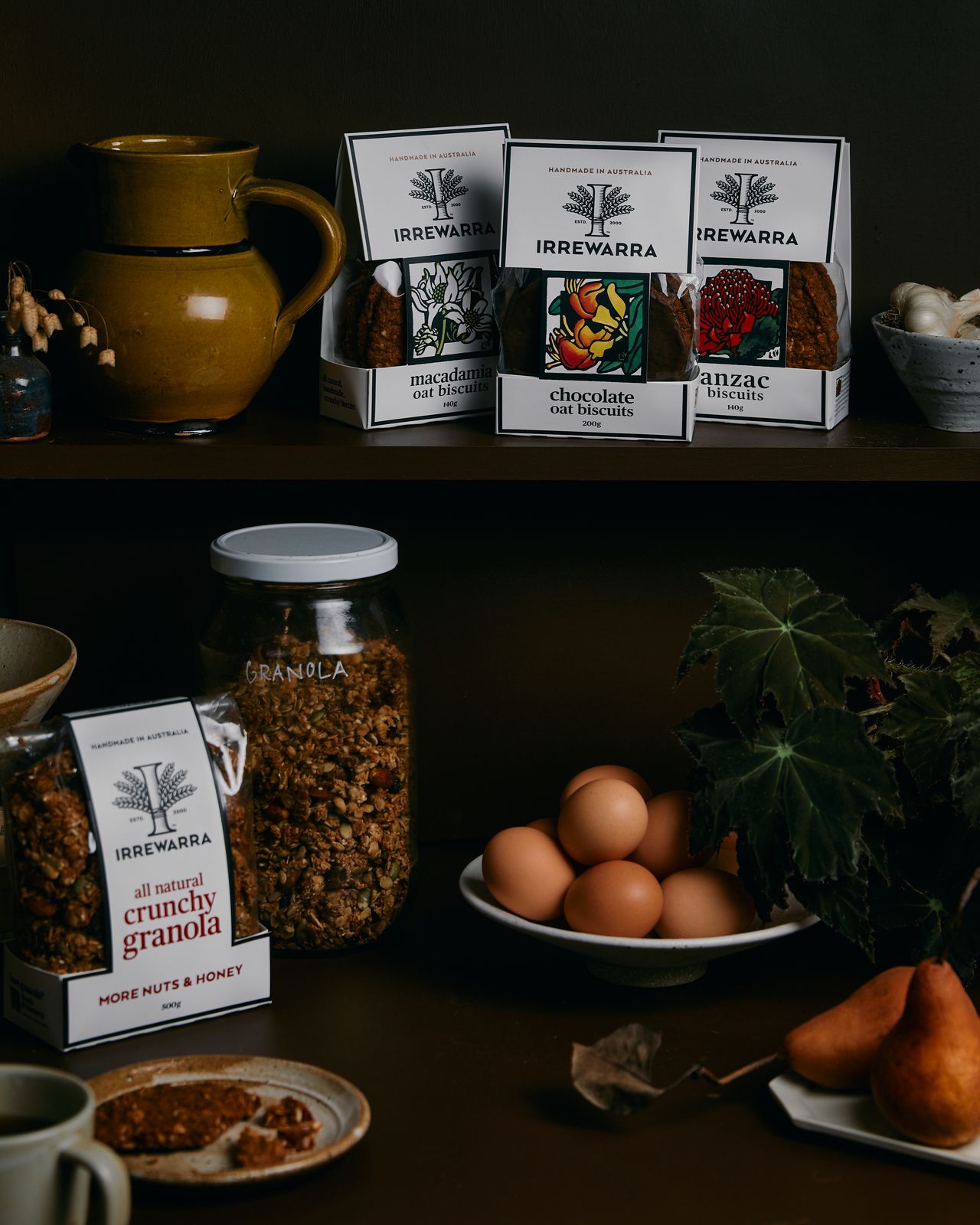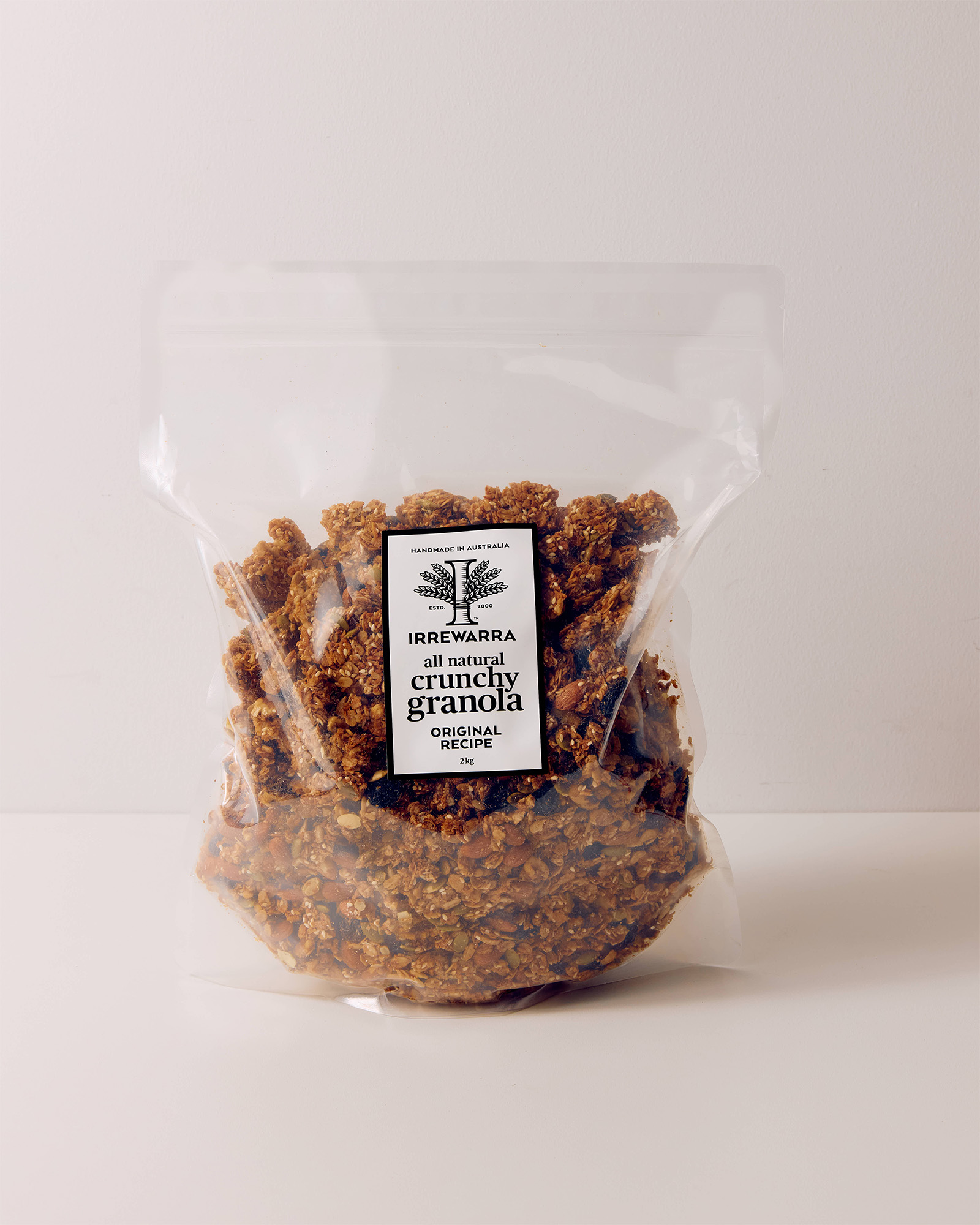Irrewarra’s favourite seasonal jam and marmalade: perfect on Irrewarra Sourdough toast!
At Irrewarra, we’ve been committed to hand-making our products from quality Australian ingredients, as local as possible, since we started in 2000.
And that doesn’t stop with our bread, granola and biscuits – Irrewarra has an orchard, and we use the fruit from the blood plum trees each year to make jam for the fruit mince in our festive Fruit Mince Tarts. In a good year, fruit from the apricot orchard gets made into jam which is sold at stores along the Great Ocean Road. Irrewarra Sourdough founder and director Bronwynne Calvert also looks forward to late summer and early autumn for the bountiful harvest her home orchard brings, which include plums and cumquats.

Cumquat trees laden with fruit. Image: B. Calvert
Jam and marmalade are a great way to use up seasonal fruit when it is plentiful and preserve the wonderful fruit flavours for enjoying all year round on sourdough toast or dolloped atop granola – plus they make a well-received homemade gift.
Read on to discover Bronwynne’s recipes for Blood Plum Jam and Cumquat Marmalade – plus some preserving tips and tricks.
Blood Plum Jam
Blood plum jam is one of my favourites. It’s so dark, rich and intense. I have two blood plum trees, and one or the other always gives plenty of fruit. We use the jam each year for our Fruit Mince Tarts, but there’s always enough jam for home for sourdough toast.
The quality and flavour of the jam you make will depend on the fruit used. It’s important to use a mix of softer ripe plums, for sweetness and the rich red colour, as well as firm plums for acid. When you pick your own, there is always a mix, as the plums don’t ripen at the same time. But if you’re buying them, try to select a mix of firm and ripe fruit.
I use Stephanie Alexander’s recipe as a base but don’t follow it exactly.
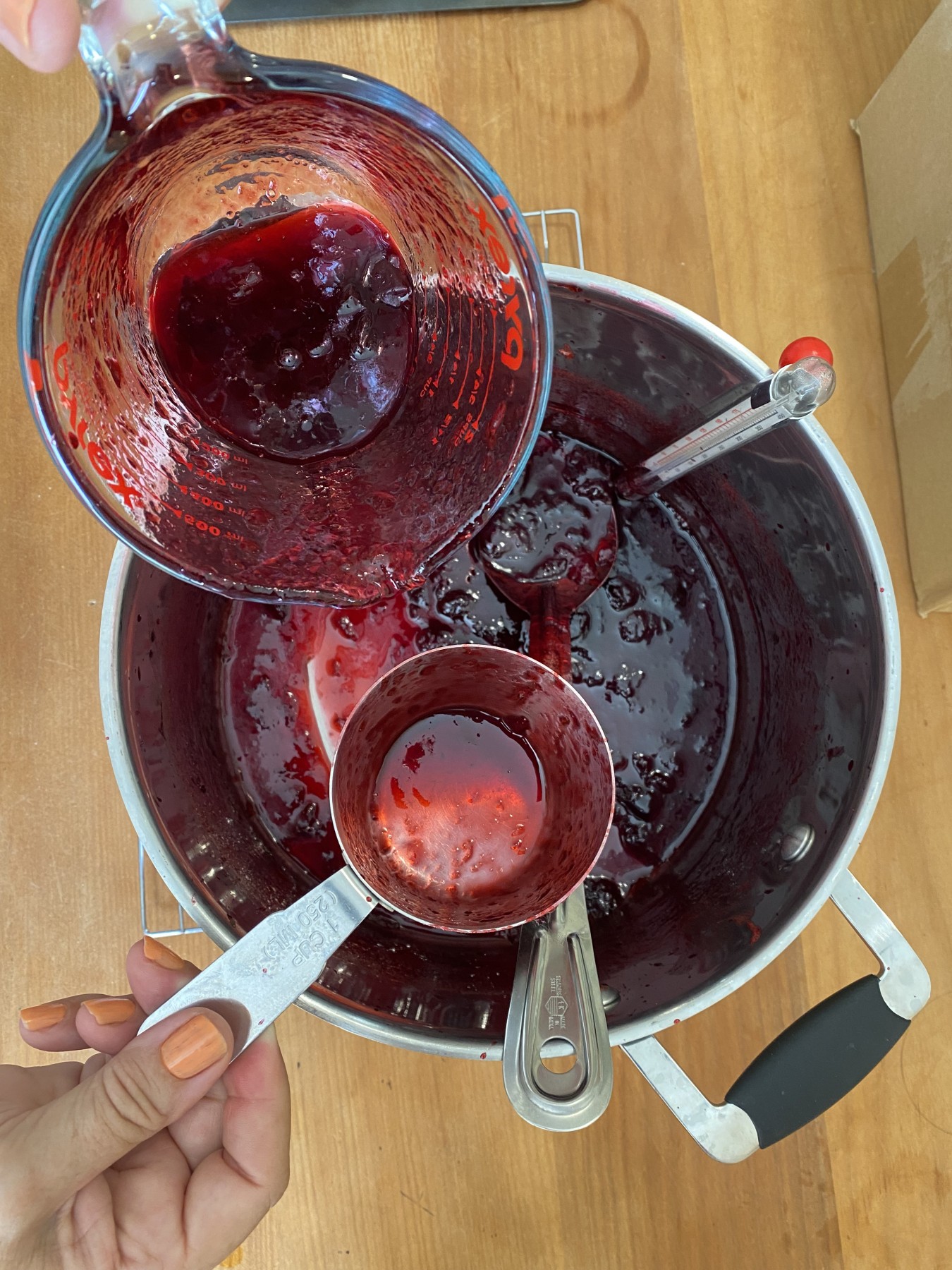
Making Blood Plum Jam. Image: B. Calvert
Ingredients
2kg blood plums
1.25kg of sugar
2 tbsp lemon juice (about 1-2 lemons)
Equipment
Large stainless steel bowl
Large heavy bottomed pot
Wooden spoon, for stirring
Large stainless steel spoon
Bowl for froth
Cold saucer to test if jam is set
Seven 300ml jars, plus lids
Pyrex jug
Jam funnel
Method
- Begin this step in the morning or the day before you are making the jam. Quarter and remove the stones from 2kg of blood plums. Place the plums and 1.25kg of white sugar in a large stainless steel bowl and mix well. The sugar will extract the juice and colour from the plums. Keep stirring during the day until the sugar has dissolved, and you have a thick bright red juice with the fruit suspended in it. Make the jam that evening or the next morning.
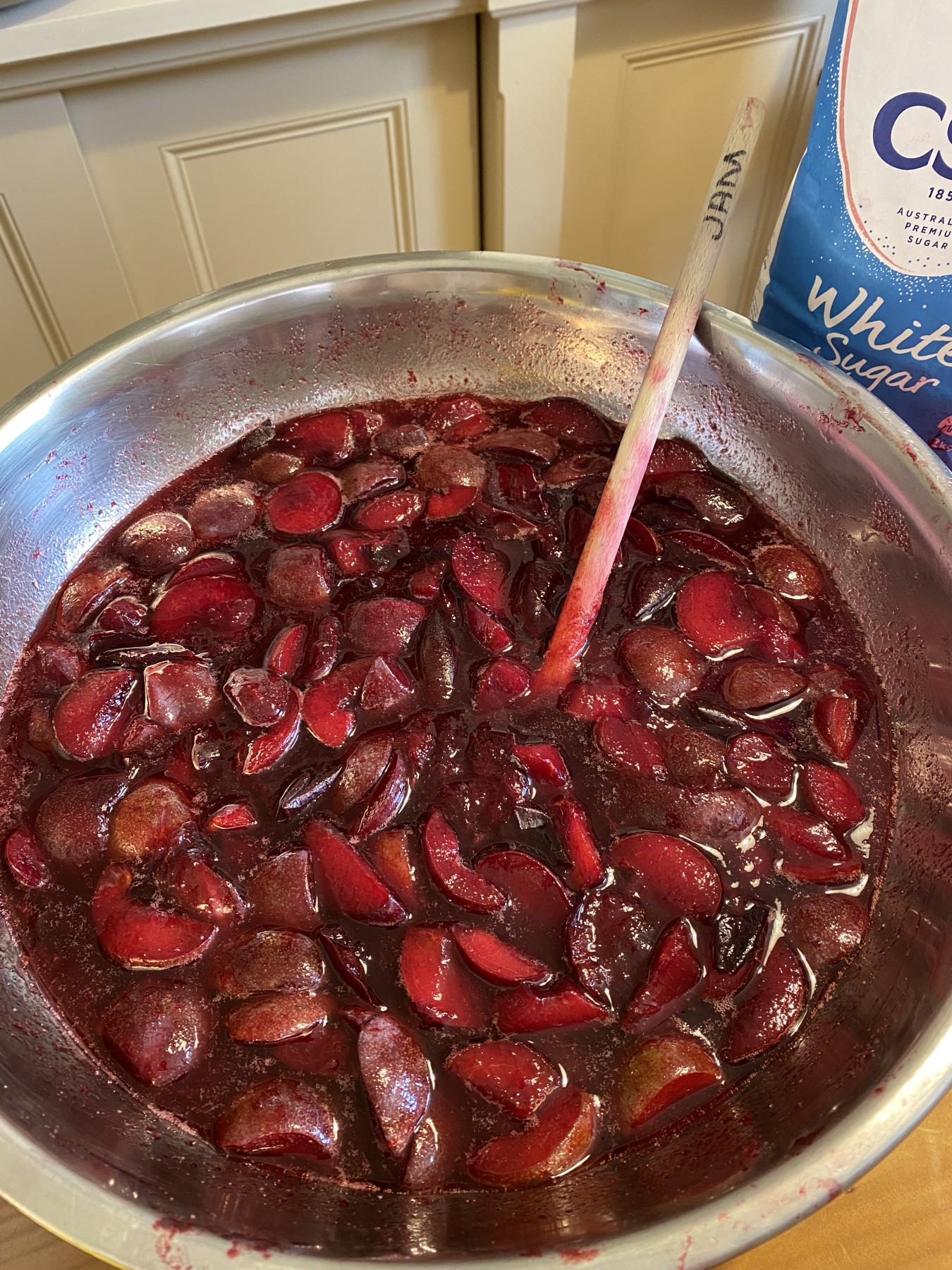 Macerating blood plums with sugar. Image: B. Calvert
Macerating blood plums with sugar. Image: B. Calvert - Place seven 300ml jars in the oven at 100ºC to sterilise for about 10 minutes. Place the lids in a pot of boiling water and boil for 10 minutes. Then drain, careful not to touch inside the lids. This can be done while the jam is cooking.
- Put the fruit and sugar mix in a large pot, large enough that the fruit only reaches halfway up the pot (as it will froth up and you don’t want it to overflow) – at least 8.5 litres.
- Bring to the boil, stirring. Remove the froth with a large metal spoon, placing it into a bowl next to the pot. Once the frothing stops, add the two tablespoons of lemon juice. Keep the fruit boiling on high heat for about 15-20 minutes or until it reaches about 105ºC on a sugar thermometer. If you don’t have a sugar thermometer, keep an eye on the jam and monitor the drips off the spoon – when they start to thicken and become jelly-like, it’s ready. Another test is to let drops of jam fall on a cold saucer, and if it beads (and the bead holds and doesn’t immediately run), the jam is set. I like my jam a bright rich red, and a little runny as it has more fruit flavour than if cooked too thick. If you cook it too long the jam darkens and becomes thicker but loses fruit flavour.
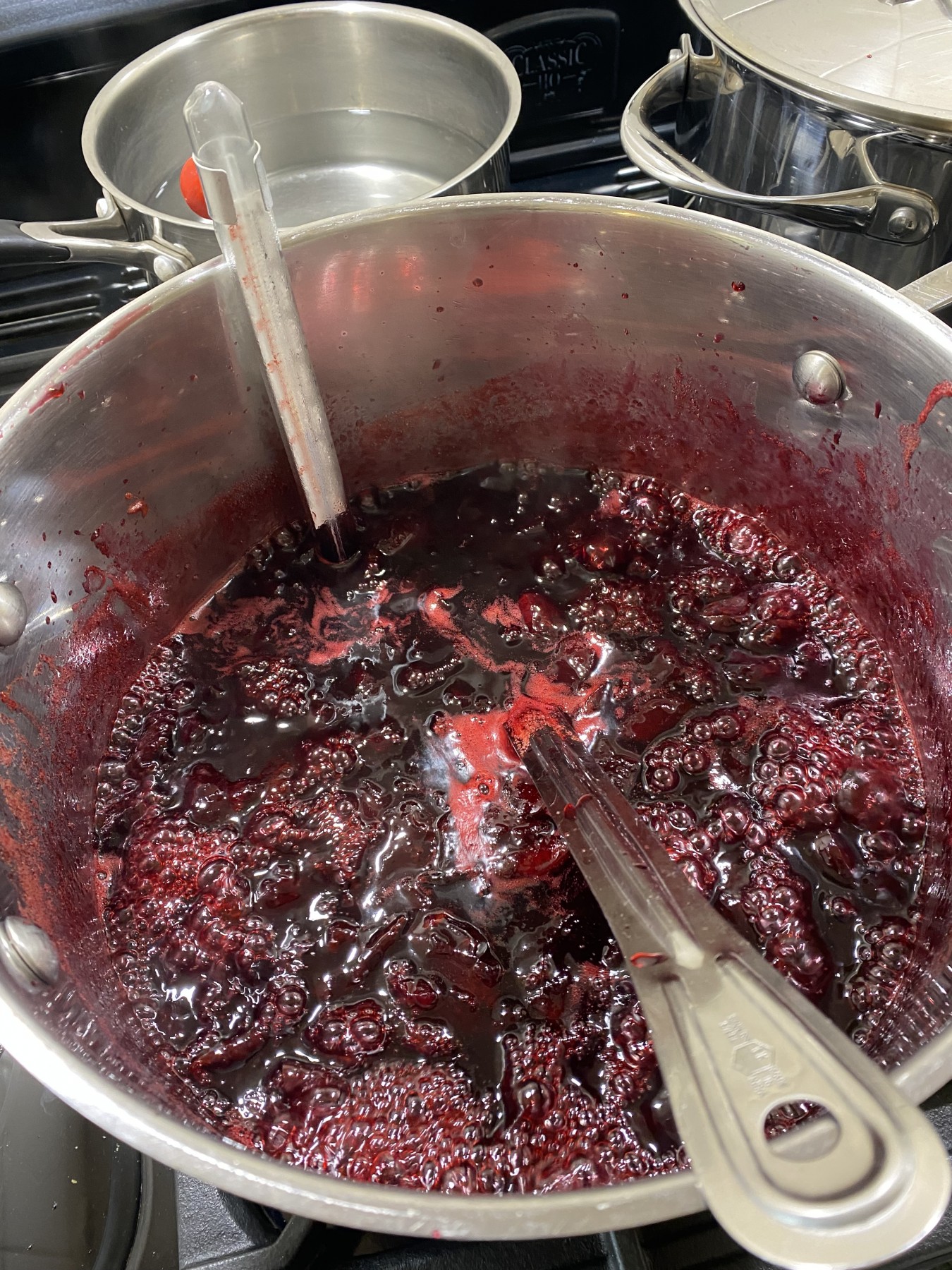
Blood Plum Jam on the boil. Image: B. Calvert - Remove from the stove and then using a sterilised (with boiling water) small jug, pour the jam into the hot jars, using a jam funnel if you have one, and put the lids on.
This is the perfect amount of jam as it will last you a year in the cupboard. Or, give a few jars away as it will be so appreciated by your friends and family – bought jam is never anywhere near as good as homemade!
Cumquat Marmalade
This is the only marmalade I make, as I think cumquats make the best marmalade! Cumquat skin is thinner than other citrus, and the jam is so beautifully orange and clear. It’s much tarter than oranges or grapefruit. I have the Marumi variety which grows well and is most common in Australia.
I again use Stephanie Alexander’s recipe as a base.
The wonderful thing about this marmalade is that it sets so quickly because of the acid in the citrus. Also the pre-soaking of the fruit softens the skin, making cooking quicker too.
If you don’t already have a Cumquat tree, I recommend getting one. They suit any sized garden because they’re a small tree and they look great in a large pot in a sunny spot. They do need watering in summer and lots of feeding with compost, plus a free draining soil. It’s great to pick the crop each year to make marmalade. I have one very old cumquat tree that fruits prolifically every year and a few smaller younger trees, but over the years I have bought a box from a commercial grower to make into marmalade. You may have to order cumquats from your local fruit shop so the owner picks them up from the wholesale market when there, as most fruit stores don’t stock them.
Again, the ripeness of the fruit will determine the taste and time it takes to set. Cumquats are very ripe when the skin is loose or coming away from the inner fruit but I use mine before they are this ripe.
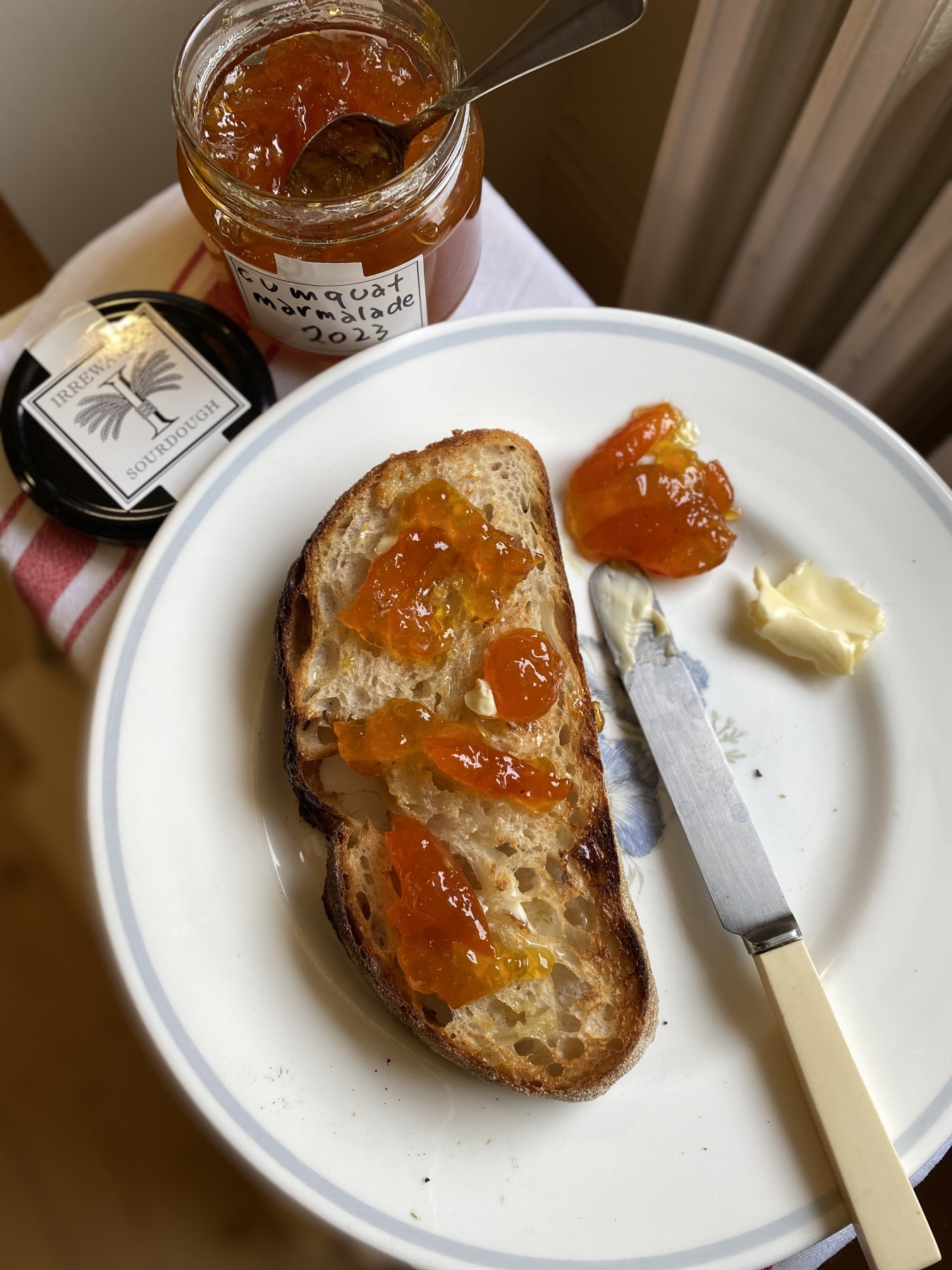
Cumquat Marmalade on Irrewarra Sourdough. Image: B. Calvert
Ingredients
2kg of cumquats
White sugar
Use the same equipment as detailed for the Blood Plum Jam.
Method
- - Halve the cumquats. Using a sieve over a bowl, squeeze the cumquat halves to pop out the seeds, letting the seeds fall into the sieve and the juice into a bowl for the marmalade. Place cut halves in a bowl. When finished cutting, add the juice to the bowl. Discard seeds.
- - Add enough water to just cover the cumquats by a few millimetres. Leave to soak overnight, or all day if you start in the morning.
- - Measure out the cumquats and water using a cup (make a note of the number of cups) into a large pot and bring to the boil. Simmer for 10 minutes or so, until the cumquat skins are soft and transparent. Turn the heat down to low to add the sugar.
- - Then, add the same number of cups of sugar as you had cups of fruit/water. Stir in the sugar until it dissolves. Then turn the heat to high, bring to the boil and cook, stirring, until the marmalade sets.
- - When the drops from the spoon turn jelly-like, or the marmalade beads (and doesn’t run) on a cold saucer, the marmalade is set. Depending on the ripeness of the fruit, this could take between 10-20 minutes. Be careful not to overcook – the marmalade should be a bright, clear orange with no browning, caramelisation or darkness, as this spoils the fruit flavour.
- - Take off the stove and preserve in the jars, using the same method as the Blood Plum Jam.

Cumquat Marmalade in jar. Image: B. Calvert
Try some of our favourite ways to use Blood Plum Jam and Cumquat Marmalade at home:
- - Spread Blood Plum Jam and Cumquat Marmalade onto thickly sliced Irrewarra Sourdough white loaves, fresh or toasted.
- - Lightly toast our Spiced Fruit and Nut Loaf – and spread with fresh goat curd and the Cumquat Marmalade.
- - Layer Blood Plum Jam with thick Greek yoghurt and top with your favourite Irrewarra Granola for a homemade parfait.
Given these recipes a go? Don’t forget to tag @irrewarra_bakery on your social media so we can see your hard work in action.









